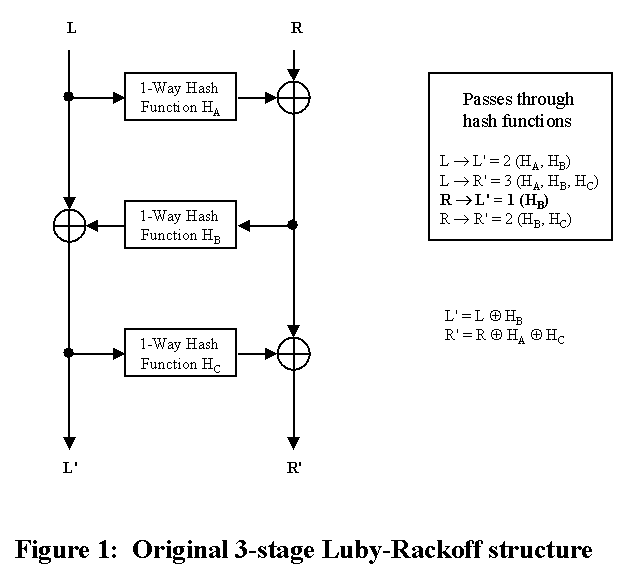
With the ongoing AES competition, it was decided to look at 4-strand Luby-Rackoff schemes because of difficulties with 64-bit arithmetic/logic functions in 32-bit architectures. This happens to coincide with several AES entries using 4-strand Feistel schemes. In the light of some of the following analysis, we can see why certain design choices were made.
Originally, this study aimed at determining the minimal number of hashes required for 4-strand Luby-Rackoff structures. The focus was on the degree of avalanche between inputs and outputs for both encryption and decryption. In Luby-Rackoff schemes we may assume that each hash function has an avalanche depth of at least 1 and probably 2 or 3.
Also, the integrity of the structure is examined to see if any of the internal blocks can be analysed, thus making the overall analysis easier.
In Fig. 1, note that HB occurs on all paths though the system and is exposed to differential analysis by bit-flipping R and looking at L'. HC can be examined using the known input and calculating the output differentials. The minimal path thought the hash stages is highlighted in bold type.
Similarly, in the reverse direction (decryption) HA can be
analysed.

After adding a fourth stage to the 2-strand scheme (Fig. 2), some hash functions become difficult to examine - either in a static mode or differentially. With HB and HC at least 2 hash functions are involved in each input/output pair of readings. However, the outer two hash functions are still susceptible as in the 3-stage scheme.
Note: There is encryption/decryption symmetry with these 2-strand configurations - something difficult to achieve when there are 3 or more strands.
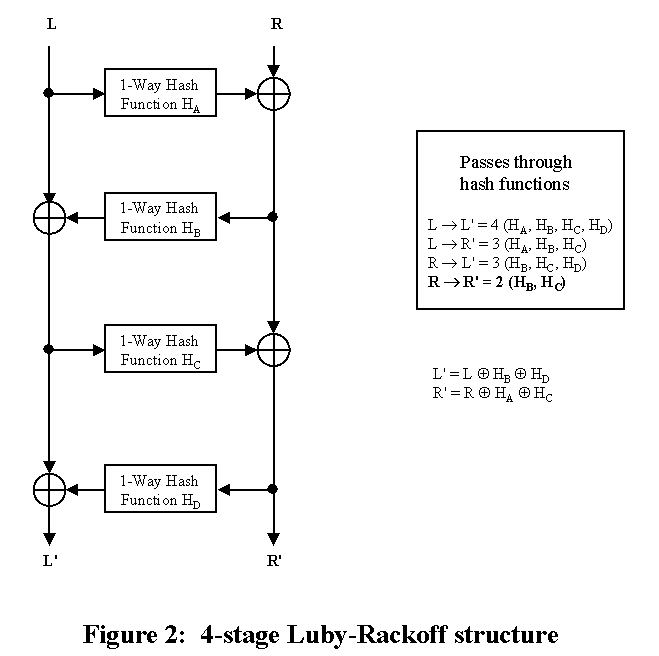
Seven stages are required before there is an avalanche path through the network from any input strand to any output strand (in the forward or encryption direction). As with the 2-strand, 3-stage scheme, the centre stage (HD) and the latter 3 stages can be easily interrogated.
However, when this is inspected in the reverse direction, we discover that
there are a number of avalanche paths that are missing. In order to get
full reverse avalanche, a minimum of 13 (see Fig. 4) stages are required.
This strange result occurs when:
(a) the
number of strands is > 2 and
(b) when the
output of the hash modifies only one strand.
If this scheme is visualised in 3-D with the 4 strands in a square, then
the avalanche flow becomes a square spiral. In the reverse
direction, the spiral appears to be going the wrong way as the stages are
performed in reverse order. This causes the avalanche to bypass
pairs of stages. E.G. P' to R passes through HE
and HB, ignoring stages HD and HC.
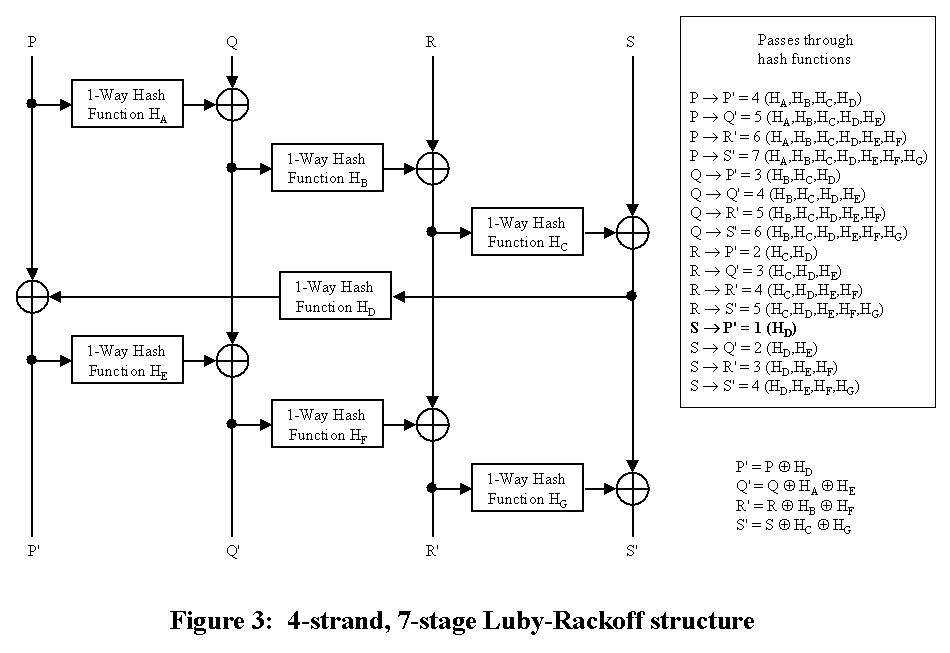
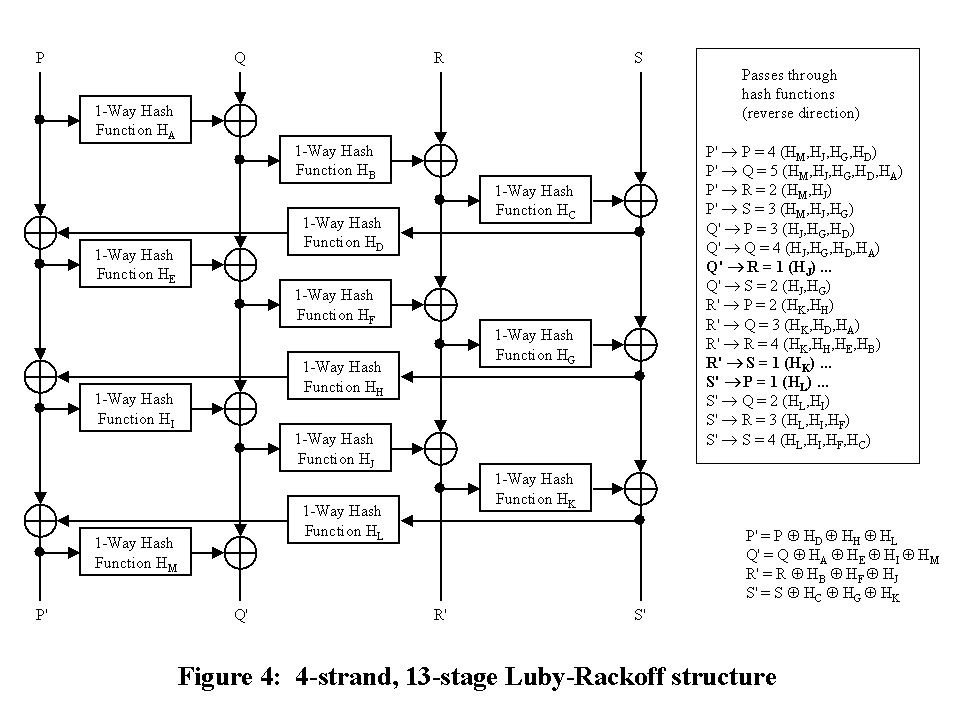
Note that HM is crucial for the reverse avalanche path P' to P (HM, HJ, HC, HD). Also note the inefficiency - 2 out of 3 hashes are not used. Compare this with the MARS and CAST-256 AES entries.
In Cast-256, the first 24 stages are used for the forward avalanche (6 forward quad-rounds in CAST-256 terminology) and the the following 24 are used for the reverse avalanche ( 6 reverse quad-rounds). This means that in the forward mode, the avalanche passes through between 18 and 24 stages, whereas in the reverse mode it passes through between 4 and 8 stages.
MARS uses a type-3 Feistel scheme where one strand is used to modify the
other three. It says '... this construct provides much better diffusion
properties with only a slightly added cost.' To complicate matters,
not only are there are forward and backward stages but also there are two
types of each: a mixing and a keyed transformation. The mixing stages
accentuate rapid mixing and key avalanche to frustrate chosen-plaintext and
differential attacks. The transformation or cryptographic core stages
are designed frustrate chosen-ciphertext attacks.
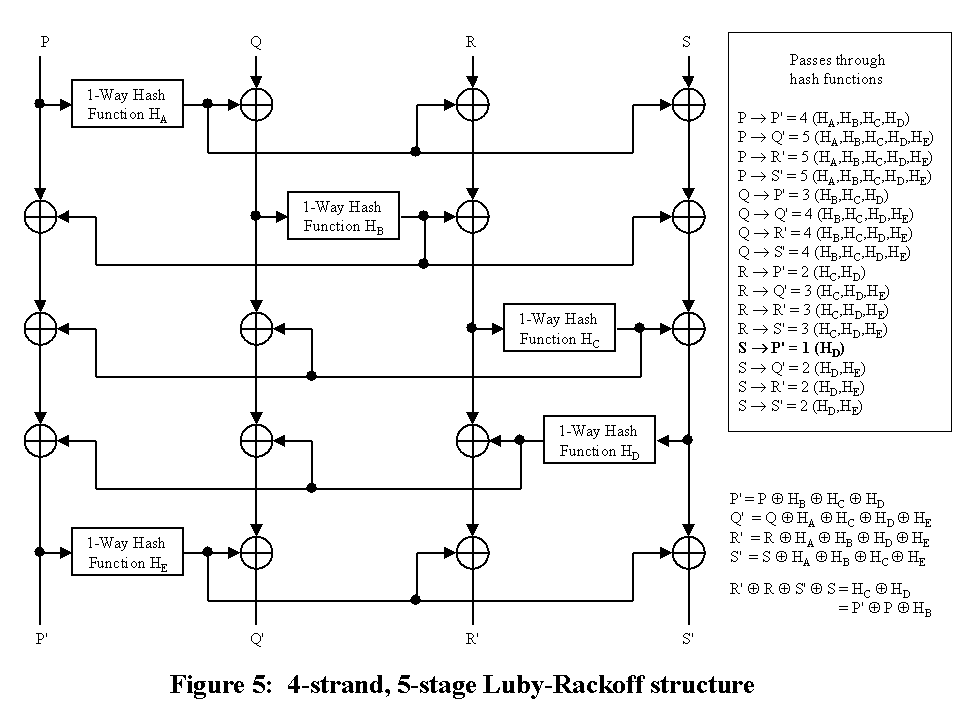
It is possible to combine the hash outputs with the all strands except the one being hashed. With 5 stages, there is an avalanche path from all inputs to all outputs and vice versa for the reverse case. However, HD is exposed to analysis and changes to S are reflected in the same differential change to Q' and R'.
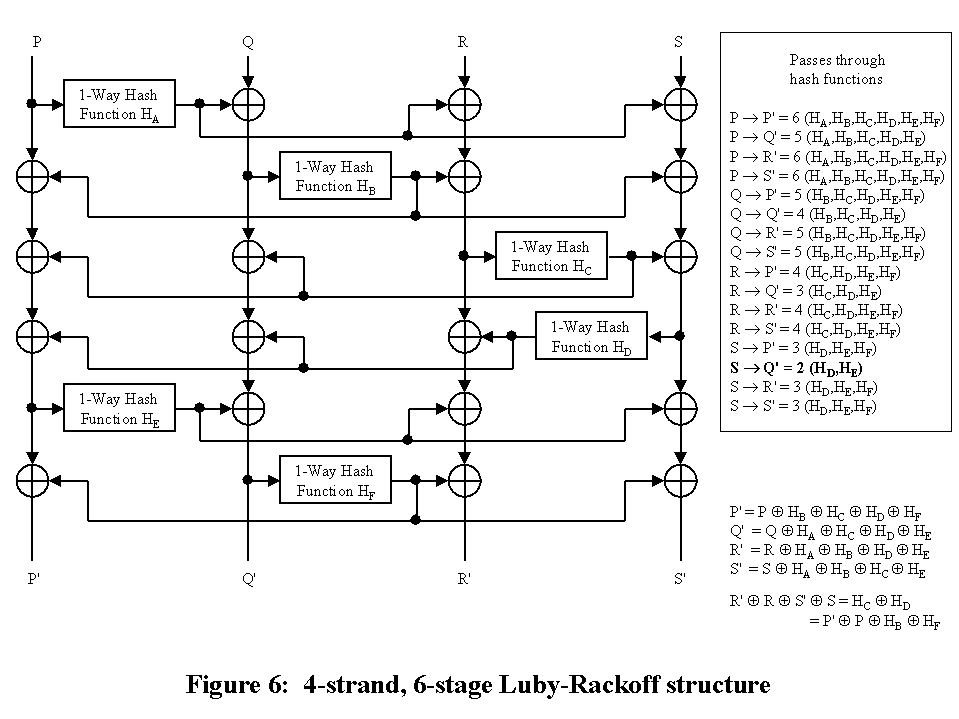
Some of the objections to the previous scheme can be overcome by increasing
the number of stages from 5 to 6. However, by comparing the
differentials from R' and S', the differential output of HD can be
determined.
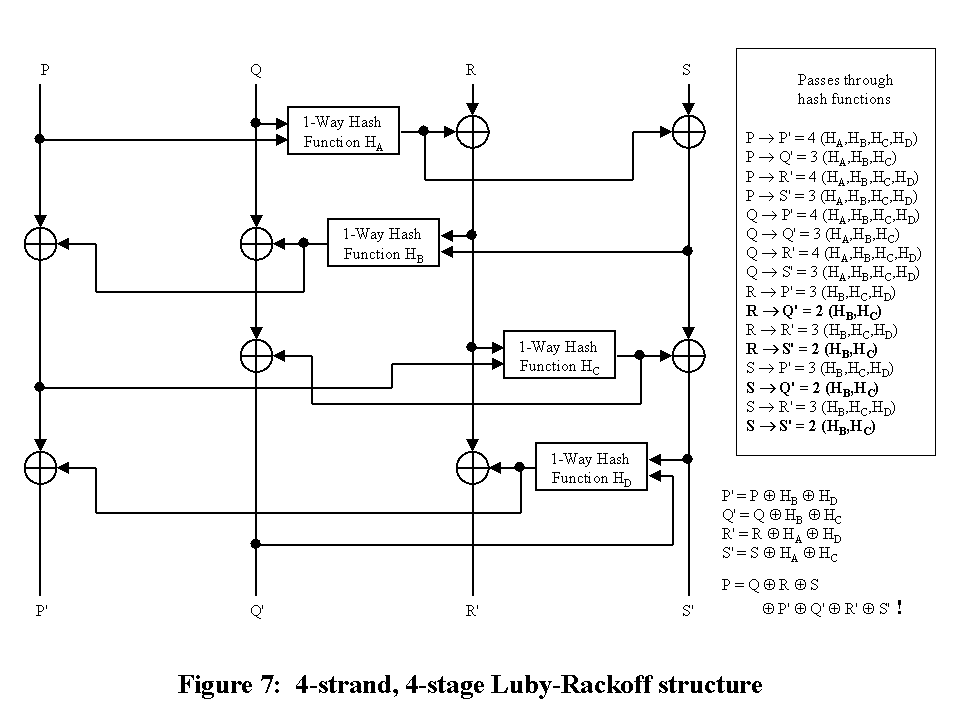
The two input strands must be hashed together in a non-trivial way,
otherwise cancellation attacks are possible. Also, if you examine the
equations for the 4 strands, the contributions of the hash functions can
cancel out - making way for a known plaintext attack. Twofish and RC6
don't suffer from this problem because the two outputs are substantially
different, making cancellation impossible.
Back to home page
AES,block cipher,CAST-256,cipher,crypto,cryptography,
czczcz,cipher design,encryption,Feistel,Luby-Rackoff,MARS,
RC6,Twofish